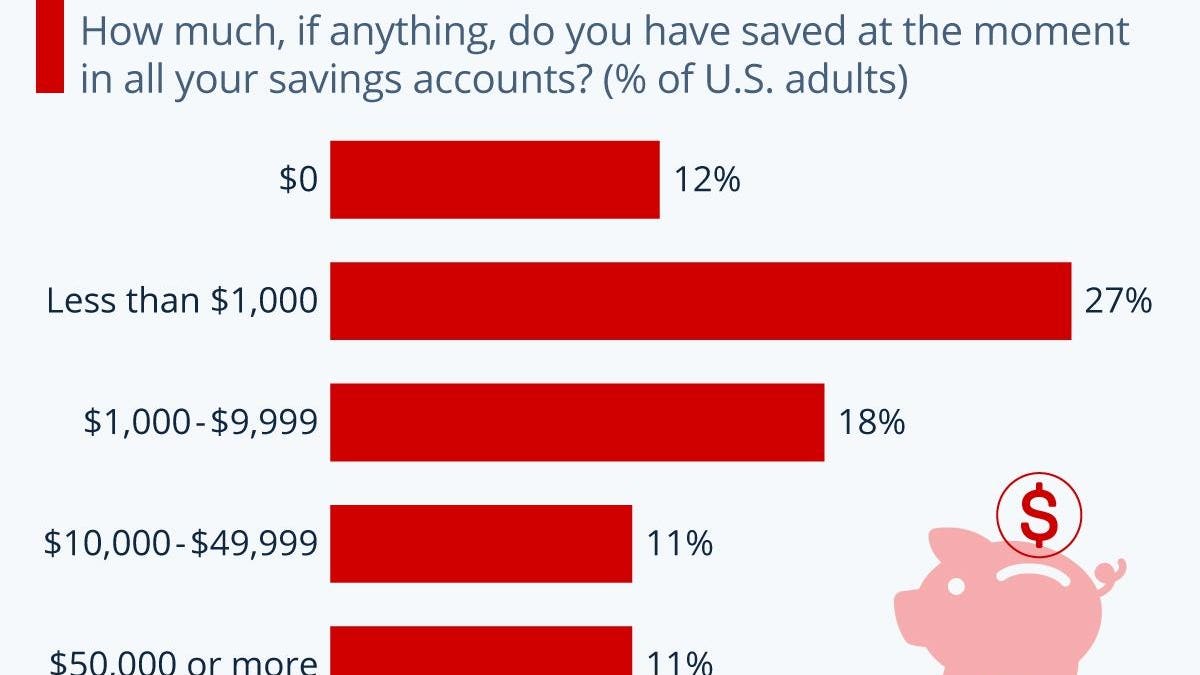Americans today are lacking crucial savings needed for managing short-term emergencies and building long-term wealth. According to a rolling representative online survey among U.S. adults by YouGov, 27% of Americans had some savings below $1,000 as of May 2023, while 12% said they had no savings at all.
This is about as many people as those who volunteered to give answers about the status of their savings and had more than $1,000 in the bank. 18% said their saving were at least $1000 but under $10,000, while 11% each had $10,000 to $49,999 and $50,000 or more saved up. A substantial share of respondents—17%—preferred not to answer.
ADVERTISEMENT
The survey also found that U.S. women were much less likely to have (substantial) savings. 9% of men, but just 5% of women said they had saved $100,000 or more—one of the biggest spreads in the survey. 8% of men said they had zero savings, while this sentiment was echoed by a whopping 15% of women.
Women’s multiple penalties
The reasons why women’s savings are typically lower than men’s are connected to women’s wages, which are lower on average—for the same jobs and also because women work lower-paying jobs or part-time jobs more often. One more aspect that plays into the gender wage gap is the so-called motherhood penalty—the missed wage increases and promotions women experience because they take more time off for child rearing. Additionally, women in the U.S. have higher student loan debt on average, also affecting savings negatively.
Surprisingly, single Americans are not the ones who are able to put the biggest amounts of money away for a rainy day. 10% of married Americans fell into the survey’s highest savings bracket of $100,000 or more, with widowed (6%), partnered (4%) and single Americans (3%) far behind. Married Americans dominated all savings brackets above $5,000, while people in the lower savings brackets were more likely to be unmarried, separated or divorced.
ADVERTISEMENT
Two paychecks and a stable marriage
According to the Institute for Family Studies, the higher wealth of married Americans is due to a correlation of high education status and stable marriages. These marriages among the highly educated are also more likely to include two earners, which again increases the likelihood of big savings. Married couples can also split household costs, according to the report, making them cheaper on average than what many single people pay. They also benefit from lower taxes.
In an international comparison, American savings rates are doing poorly. In the OECD, Americans saved the 7th highest amounts of money at an annual average of $4,234 in 2020. However, this equated to only the 15th highest savings rate in the organization at 8% of disposable income. This shows that Americans, who have the highest disposable incomes in the OECD, are simply not saving as much of them as people in other developed nations despite opportunity to do so. Since the pandemic, U.S. savings rates have dropped even more.
—
Charted by Statista
ADVERTISEMENT
Read the full article here









